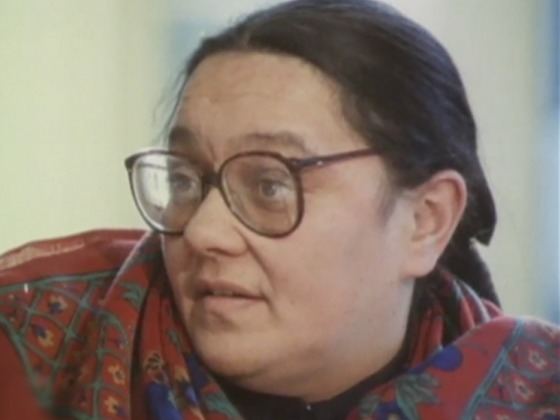Name Shona Davies | ||
 | ||
Education | ||
Shona Rapira Davies (born 1951) is a Great Barrier Island-based sculptor and painter of Ngati Wai Māori descent.
Contents
Education
Rapira Davies first studied at the Auckland College of Education, majoring in art, and later in Dunedin at Otago Polytechnic, graduating with a Diploma in Fine Arts in 1983. In 1989 she was awarded the prestigious Frances Hodgkins Fellowship and a residency for indigenous artists at the Banff Centre of the Arts in Canada.
Career
She exhibits widely; both as a sculptor and as a painter. Rapira Davies is interested in the empowerment of Māori women in spite of perceived racism (in a Pākehā culture) and sexism (within the patriarchal structure of Māori tribal organisation). She uses her art work to make statements about perceived injustices against Māori.
She is well known for her landscape sculpture commission for Te Aro Park (also called Pigeon Park) in central Wellington. The ceramic tile permanent work is considered one of New Zealand's most successful public sculptures. Set in a narrow triangle of public space with adjacent busy roads and much foot traffic it is a very visible work.
One of Rapira Davies' major works, the sculptural installation Nga Morehu (1988), the title of which translates to 'the survivors', is held by the Museum of New Zealand Te Papa Tongarewa, along with preparatory drawings. The work was originally made for Whakamamae ('to feel pain'), an exhibition Rapira Davies had with painter Robyn Kahukiwa at the Wellington City Art Gallery in 1988. Nga Morehu pays tribute to the strength and resilience of Māori women. The work depicts the karanga, the call of welcome performed by women which begins ceremonial occasions, through a group of terracotta figures arranged on an unfinished whāriki (woven flax mat). A naked female child faces a group of women advancing towards her, performing the karanga, and at the end of the mat is a seated kuia (female elder). The body of the child is adorned with the words of a contemporary poem and that of the kaikaranga (the women leading the karanga) with the words of a waiata (a song), while the other female forms carry racial slurs. Curator Megan Tamati-Quennell writes:
Reflecting the rise of the political Māori voice and the place of feminism in New Zealand art at the time, Nga Morehu portrays the impact of colonisation on Māori culture and Māori women particularly. Yet Rapira Davies' work suggest transcendence too, by revealing a ritual state rarely portrayed, and through it, a Māori definition of beauty, status and worth.
In 2015 Te Papa opened a focus exhibition on Rapira Davies and fellow senior artist Emily Karaka which includes Nga Morehu alongside preparatory sketches and more recent works.
Collections
Her works are held at Te Papa and Auckland Art Gallery Toi o Tāmaki
